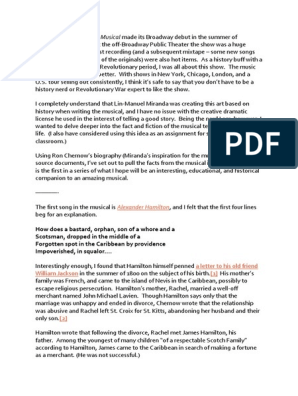0% found this document useful (0 votes)
108 views14 pagesThe Crucible Creative Context
In 1692, in Salem Village (now Danvers), Massachusetts, a group of young girls began having fits, which doctors could not explain. In Puritan New England, these unexplained fits were thought to be caused by witchcraft. The girls accused several local women of afflicting them with spells. As fear and hysteria spread, more accusations were made and over 150 people were arrested and imprisoned. By the time the hysteria ended in late 1692, 19 people had been hanged as witches, including several respected members of the community. The trials exposed conflicts within the community and tensions caused by rigid Puritan society.
Uploaded by
Polly VictoriaCopyright
© © All Rights Reserved
We take content rights seriously. If you suspect this is your content, claim it here.
Available Formats
Download as PPTX, PDF, TXT or read online on Scribd
0% found this document useful (0 votes)
108 views14 pagesThe Crucible Creative Context
In 1692, in Salem Village (now Danvers), Massachusetts, a group of young girls began having fits, which doctors could not explain. In Puritan New England, these unexplained fits were thought to be caused by witchcraft. The girls accused several local women of afflicting them with spells. As fear and hysteria spread, more accusations were made and over 150 people were arrested and imprisoned. By the time the hysteria ended in late 1692, 19 people had been hanged as witches, including several respected members of the community. The trials exposed conflicts within the community and tensions caused by rigid Puritan society.
Uploaded by
Polly VictoriaCopyright
© © All Rights Reserved
We take content rights seriously. If you suspect this is your content, claim it here.
Available Formats
Download as PPTX, PDF, TXT or read online on Scribd
/ 14

























































































